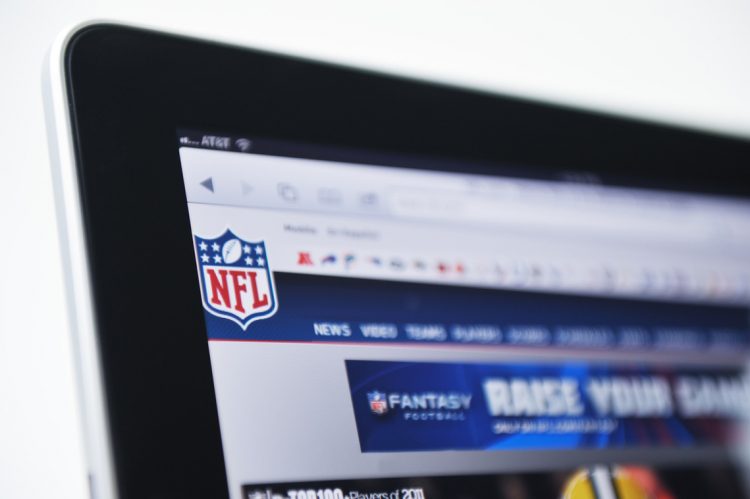Over the years, I’ve spent a lot of time studying the connection between sports and leadership, and specifically football and leadership, drawing inspiration from sports icons like my buddies Dwight “The Catch” Clark, Ronnie Lott, Steve Mariucci, Brent Jones, and Johnnie Johnson, Allan Dalton and Jimmy Burgess, along with Eddie DeBartolo, Bill Walsh, Joe Montana and Tom Brady.
During the recent 2023 Berkshire Hathaway HomeServices Summit Conference, I met Jimmy Burgess, CEO of Berkshire Hathaway HomeServices Beach Properties of Florida, (who I mistakenly referred to as Jimmy Buffett during my Tuesday morning Summit talk) every morning at 5 a.m. at the hotel pool, where we’d spend an hour treading water and talking about leadership. During one of these workouts, Jimmy told me: “Gino, leaders are just like coaches, because the best leaders bring out the best in their teams.”
That got me thinking about leadership lessons we could learn from football. The NFL is more than just a powerhouse athletic competition. It’s a complex institution that showcases teamwork, strategy, and leadership both on and off the field. Whether you’re a die-hard football fan or interested in the dynamics of effective leadership, the NFL offers a multitude of lessons for us all. Let’s dive into these insights.
The importance of teamwork: Football is a team sport where individual brilliance can shine, but victories are achieved collectively. Leadership isn’t a solo endeavor; it requires collaboration and relies on the strengths of each team member to win a game and a championship.
Adaptability and change: In the NFL, game plans can change on the fly, and coaches must adapt to the opposing team’s strategies as they adjust. Similarly, leaders must be prepared to adjust their strategies when circumstances change. Think of the halftime adjustments the best coaches make to change the outcome of the game.
Preparation and planning: From hours of film review to grueling practice sessions and NFL training camp, success on game day is a result of the exhaustive preparations that happen behind the scenes. Miami Dolphins Head Coach Mike McDaniel famously leaves his house at 2:24 a.m. for work every day, getting to the office a little before 3 a.m. It’s a habit acquired after working under former Houston Texans Head Coach Gary Kubiak, who called McDaniel twice at 6 a.m. without an answer. (McDaniel was later fired from the job specifically for being late twice). The experience taught McDaniel a harsh lesson about priorities, preparation, and planning. “You’re chasing the best version of yourself,” he told ESPN when describing his early-morning commute. “This part of the day is so unique because everything is in front of you.” Being prepared can make the difference between success and failure.
Resilience in the face of adversity: Setbacks, like injuries or game losses, are part of the NFL. Just look at the awful, season-ending injury of New York Jets Quarterback Aaron Rodgers after just four snaps into his first game with the team. However, teams regroup and adjust and return with renewed vigor. Leaders, too, will face setbacks but must demonstrate resilience and perseverance.
Continuous learning: The best NFL coaches and players are always studying, learning, and refining their techniques. Tom Brady’s former teammate, Tight End Rob Gronkowski, estimated that Brady watched 40 hours of film each week. Bill Walsh talked about his return to coaching college football when he’d get five hours of sleep on a couch in his office. Leadership requires a commitment to perpetual improvement. It’s about lifelong learning and a willingness to adapt based on new knowledge you acquire every day.
Effective communication: Clear communication between coaches, players, and staff is vital for successful plays and overall team dynamics. Similarly, effective leadership requires transparent and open communication.
Accountability: Players and coaches must take responsibility for their actions on and off the field. Great leaders hold themselves and their teams accountable, recognizing that fosters trust and integrity.
Diversity and inclusion: The NFL comprises players from diverse backgrounds, and the synergy of this diversity can be a driving force behind a team’s success. In leadership, promoting diversity and inclusion can lead to innovative solutions and a broader perspective.
An example for others to follow: Captains and veteran players often set the tone for the team’s work ethic and values. As a leader, embodying the values and work ethic you wish to see in your team is crucial.
Work-life balance: While the NFL demands rigorous training, players also understand the importance of recovery and personal time. Leaders should recognize the importance of balance for sustained performance and mental well-being.
Long-term vision: The best teams in the NFL don’t just plan for the current season but also have a vision for the future. Similarly, effective leaders set short-term goals with a long-term vision in mind.
So, what’s the message? The thrills of the NFL aren’t limited to spectacular touchdowns or nail-biting finishes. They extend into the realm of leadership, strategy, and team dynamics. The league, with its diverse set of challenges and successes, offers a playbook of leadership lessons that can be applied far beyond the football field. Whether you’re leading a corporate team, a community initiative, or any other endeavor, tapping into these insights can pave the way for both individual and collective success.
This article is adapted from Blefari’s weekly, company-wide “Thoughts on Leadership” column from HomeServices of America.












